How to Build a Basic CRUD App with Meteor? A Step-by-Step Guide
In this guide, you will learn to develop a CRUD (create, read, update, and delete) application using Meteor.
We will integrate your Meteor app with Back4app as the backend service, ensuring that your data management is robust and scalable.
Throughout the tutorial, you'll set up a project named Basic-CRUD-App-Meteor, define your database schema, and configure your collections—all while utilizing Back4app’s powerful features.
You'll also see how to employ Back4app’s Admin App for efficient data management and how to secure your backend with advanced access control measures.
By the end, you'll have a production-ready Meteor application that supports CRUD operations along with user authentication.
- Develop CRUD functionalities that efficiently handle data operations using Back4app.
- Design and implement a scalable backend paired with a Meteor frontend.
- Utilize Back4app’s drag and drop Admin App to simplify data operations.
- Learn deployment strategies, including Docker containerization, for your Meteor application.
Before starting, ensure you have:
- A Back4app account with a new project. For setup instructions, check out Getting Started with Back4app.
- A Meteor development environment. Install Meteor from Meteor’s official website and ensure Node.js (v14 or later) is available.
- Basic knowledge of JavaScript, Meteor, and REST APIs. Consult the Meteor documentation for more insights if needed.
- Sign in to your Back4app account.
- Click the “New App” option on your dashboard.
- Input the project name: Basic-CRUD-App-Meteor and follow the prompts to create your project.
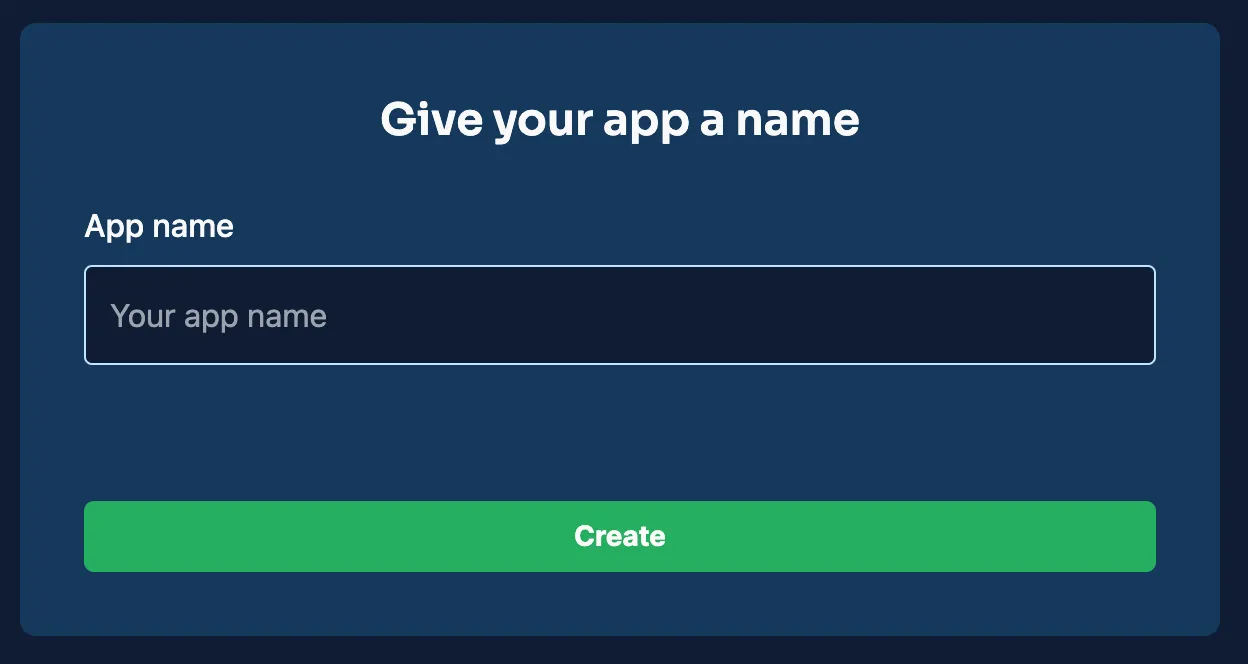
After creation, your project will be listed on your Back4app dashboard, laying a solid groundwork for your backend setup.
For a basic CRUD application, you'll need multiple collections. Below are examples detailing the collections and fields required to manage data operations effectively.
This collection holds details for every item.
Field | Type | Details |
|---|---|---|
_id | ObjectId | Auto-generated unique identifier. |
title | String | Name or title of the item. |
description | String | Brief summary of the item. |
created_at | Date | Timestamp marking item creation. |
updated_at | Date | Timestamp for the most recent update. |
This collection manages user information and authentication details.
Field | Type | Details |
|---|---|---|
_id | ObjectId | Auto-generated unique identifier. |
username | String | Unique identifier for the user. |
String | Unique email address. | |
password_hash | String | Securely hashed password. |
created_at | Date | Timestamp of account creation. |
updated_at | Date | Timestamp of the latest account update. |
Manually add these collections in the Back4app dashboard by creating a new class for each and defining the respective fields.
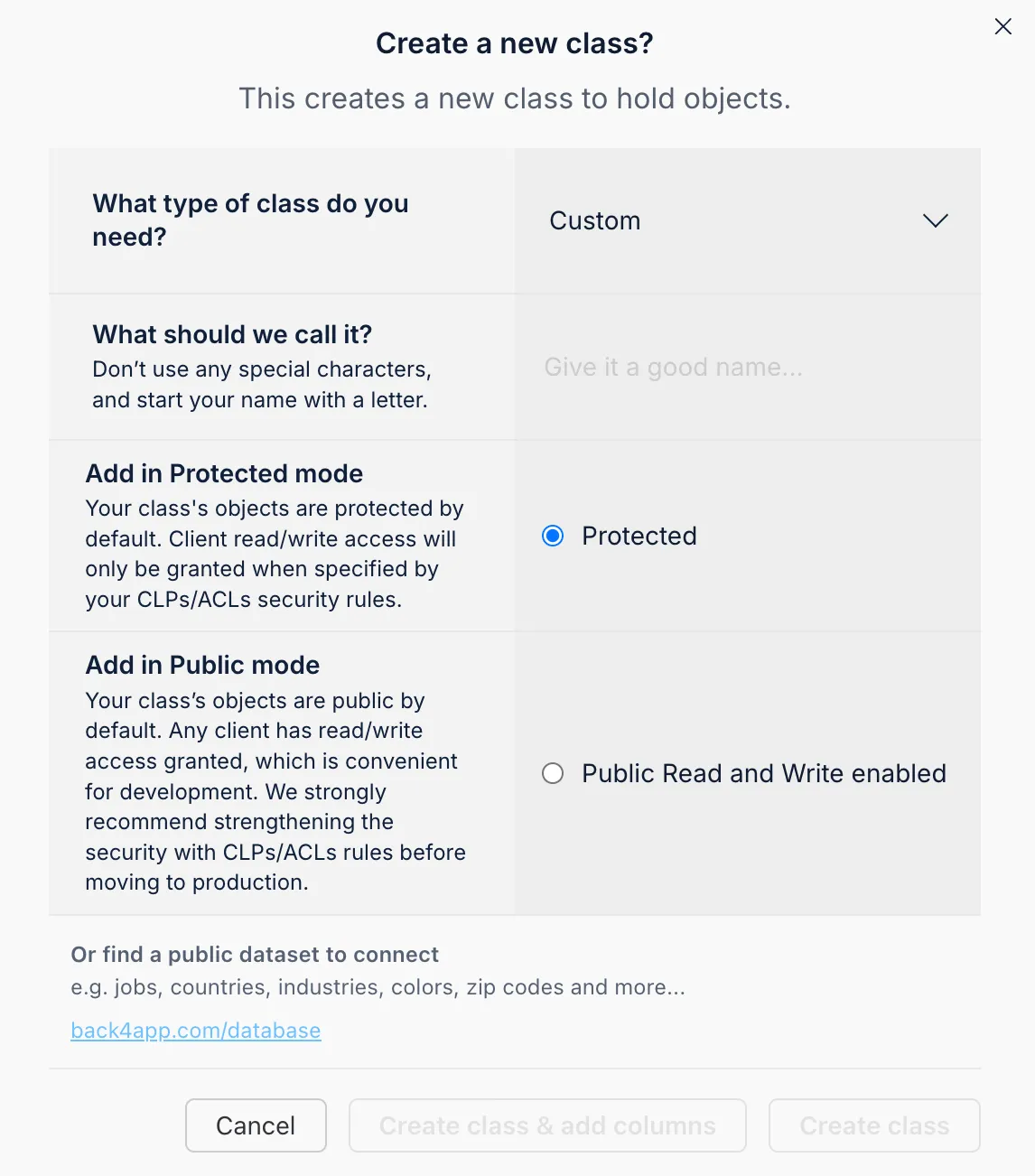
Create each field by selecting its type, specifying a name, adding default values if necessary, and indicating if it’s required.
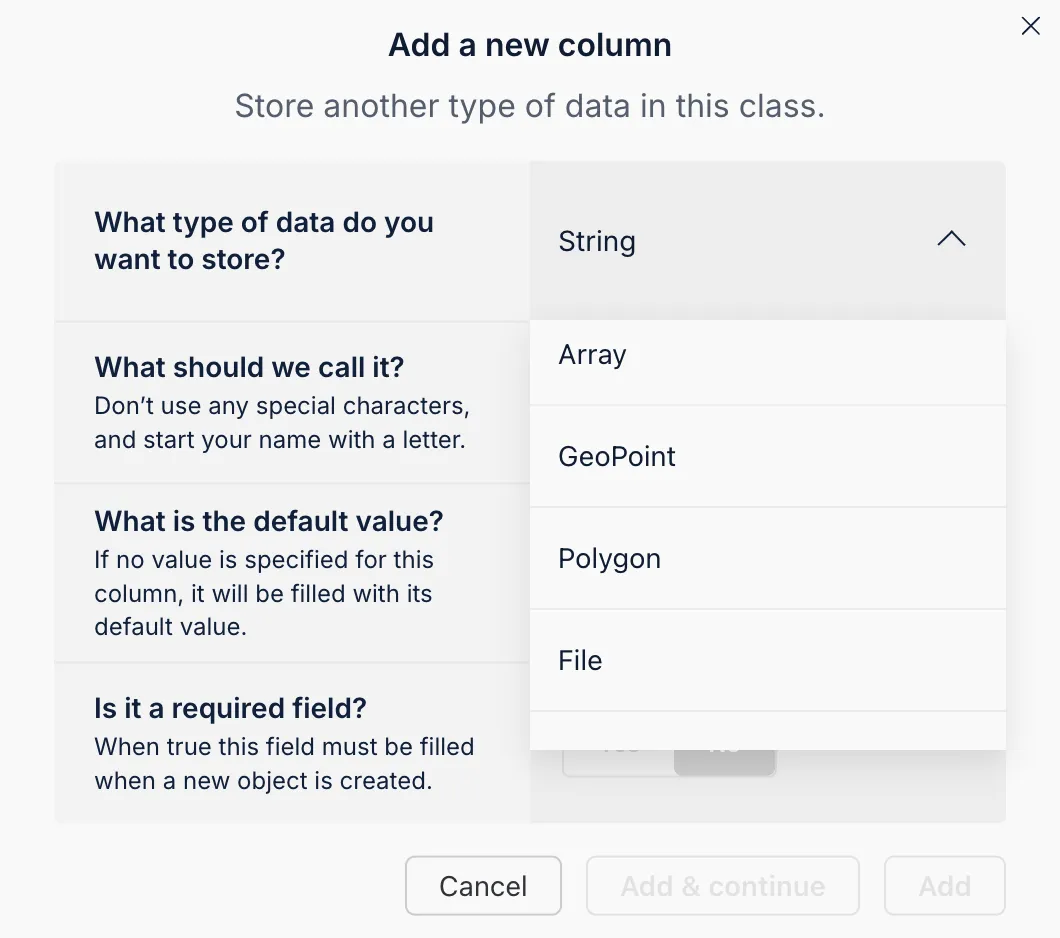
The Back4app AI Agent streamlines schema generation directly from your dashboard. By providing a descriptive prompt outlining your desired collections and fields, the AI Agent can automatically create your database schema.
- Access the AI Agent: Navigate to the AI Agent section in your Back4app dashboard.
- Describe Your Schema: Input a detailed prompt specifying the collections and fields you require.
- Review and Apply: Evaluate the suggested schema and apply the changes to your project.
This method ensures your schema is both consistent and optimized for the application’s needs.
Back4app’s Admin App is an intuitive, no-code tool that empowers you to manage backend data effortlessly through drag and drop operations. It simplifies creating, reading, updating, and deleting records.
- Go to the “More” menu on your Back4app dashboard.
- Select “Admin App” and click on “Enable Admin App.”
- Set Up Admin Credentials: Create an initial admin user, which also configures default roles such as B4aAdminUser along with system collections.
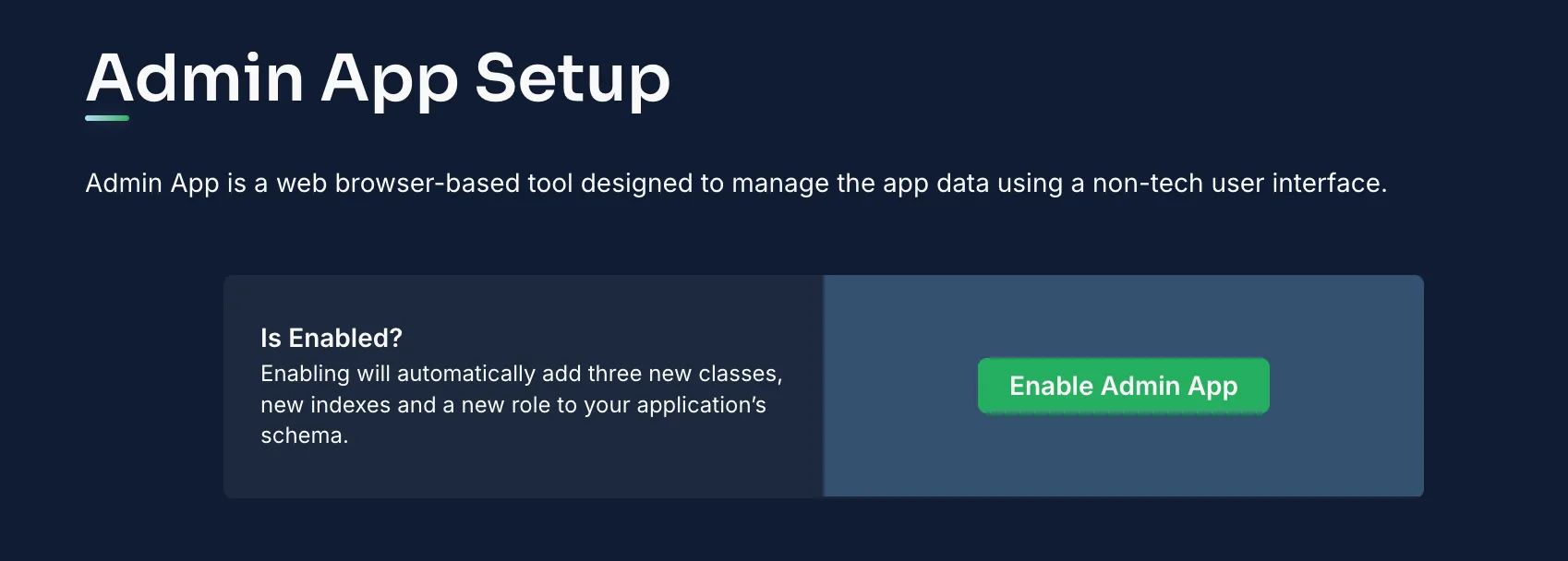
After activation, log in to the Admin App to begin managing your data.
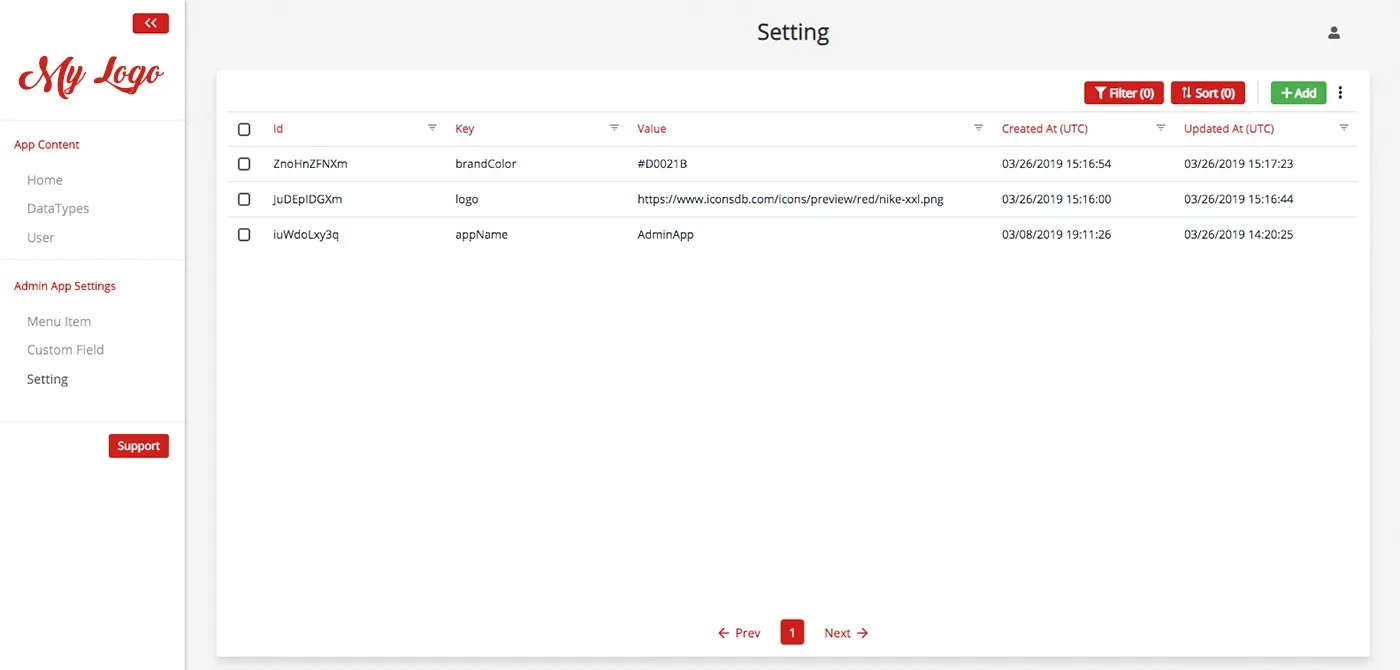
Within the Admin App, you can:
- Add Records: Click “Add Record” in any collection (like Items) to create new entries.
- View/Modify Records: Select a record to inspect or change its details.
- Remove Records: Delete records that are no longer required.
This interface greatly enhances the user experience by making data operations straightforward.
Now that your backend is configured and managed via the Admin App, it’s time to connect your Meteor application to Back4app.
You can integrate with Back4app by making REST API calls.
Below is an example code snippet to fetch items from Back4app in a Meteor method:
Integrate similar REST calls within your Meteor components or methods for creating, updating, and deleting records.
Protect your data by assigning ACLs to your objects. For instance, to create an item visible only to its owner:
Within your Back4app dashboard, set up CLPs for each collection to control default access rules. This step ensures that only authorized users can access sensitive data.
Back4app leverages Parse’s User class for authentication, but in Meteor you can handle user registration and login using standard REST calls.
Implement similar methods for user login and session management. Additional features such as email verification and password resets can be managed via the Back4app dashboard.
Back4app’s Web Deployment feature facilitates hosting your Meteor application by linking to a GitHub repository. Follow these steps to deploy your Meteor app.
- Open a terminal in your project directory.
Build your Meteor app:
Bash1meteor build ../output --directoryThis command creates a build directory containing optimized static assets.
- Confirm the Build: Ensure that the build output includes an index.html and required asset directories.
Your GitHub repository should have the complete source code of your Meteor application. A typical structure might be:
Initialize Git in your project folder (if not done):
Bash1git initAdd all source files:
Bash1git add .Commit your changes:
Bash1git commit -m "Initial Meteor CRUD app commit"- Create a GitHub repository (e.g., Basic-CRUD-App-Meteor).
Push your code:
Bash1git remote add origin https://github.com/your-username/Basic-CRUD-App-Meteor.git 2git push -u origin main
- Access Web Deployment: Sign in to Back4app, navigate to your Basic-CRUD-App-Meteor project, and click on the Web Deployment option.
- Link Your GitHub Account: Follow on-screen instructions to integrate your GitHub account.
- Select the Repository and Branch: Choose your repository (e.g., Basic-CRUD-App-Meteor) and the branch containing your code (e.g., main).
Configure the following settings:
- Build Command: If your repository lacks a pre-built folder, specify the build command (e.g., meteor build ../output --directory).
- Output Directory: Indicate the directory (such as the output folder) that holds your static assets.
- Environment Variables: Add any required API keys or configurations.
If Docker is your deployment preference, include a Dockerfile like below:
Select the Docker deployment option in Back4app if you opt for containerization.
- Deploy the Application: Click the Deploy button after all configurations are complete.
- Monitor the Build: Back4app will fetch your code, run the build command, and deploy your app.
- Access Your URL: Once deployed, Back4app will provide a URL where your Meteor app is live.
- Visit the URL: Open the provided URL in your browser.
- Test Functionality: Check that all routes, styles, and scripts are functioning correctly.
- Debug as Needed: Use browser developer tools and Back4app logs to resolve any issues.
Congratulations! You have successfully built a complete CRUD application using Meteor and integrated it with Back4app.
You set up a project named Basic-CRUD-App-Meteor, designed a robust database schema for Items and Users, and managed data via the Admin App.
Additionally, you integrated your Meteor frontend with Back4app using REST APIs and applied security measures for data protection.
Next Steps:
- Extend Your Frontend: Add features like detailed views, search functionality, and real-time updates.
- Implement Advanced Backend Logic: Consider using Meteor methods for more complex operations or integrating additional third-party APIs.
- Consult Further Resources: Explore the Back4app documentation and Meteor guides for deeper insights into performance and customization.
Happy coding and enjoy building with Meteor and Back4app!
